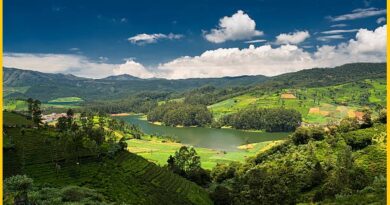Chilika Lake: Where Nature Paints Its Masterpiece
Chilika Lake
Chilika Lake is a brackish water lagoon located in the state of Odisha, India. It is the largest coastal lagoon in India and the second largest in the world. Spread over an area of about 1,100 square kilometers during the monsoon season, the lake shrinks to about 700 square kilometers during the dry season. A narrow strip of sandflats and marshlands separates the lake from the Bay of Bengal. Its unique ecosystem supports a diverse range of flora and fauna, including numerous species of birds, fish, and other aquatic animals. The Lake is especially famous as a wintering ground for migratory birds, including flamingos, pelicans, and several species of waders.
The lake is also an important habitat for the endangered Irrawaddy dolphin, as well as other species of dolphins and marine turtles. The surrounding area of the Lake is dotted with small islands, some of which are inhabited by fishing communities.
In recent years, Chilika Lake has been designated as a Ramsar site, recognizing its significance as a wetland of international importance. The lake supports local livelihoods through fishing, tourism, and agriculture and is an important regional ecological and economic resource. Efforts are ongoing to conserve and protect the biodiversity of Chilika Lake while promoting sustainable development in the surrounding areas.
Chilika Lake in India Map
This map of Chilika Lake shows Nalaban Island, Chilika Bird Sanctuary, Dolphin Sanctuary, Puri town, and Malud peninsula.

1. Chilika Lake Weather
The weather at Chilika Lake varies throughout the year due to seasonal changes. Here’s a general overview.
Summer (March to June): Summers at Chilika Lake can be hot and humid, with temperatures ranging from 25°C to 35°C. The weather is typically dry during this period, with occasional thunderstorms bringing relief from the heat.
Monsoon (July to September): The monsoon season brings heavy rainfall to Chilika Lake and its surrounding areas. Temperatures usually range from 25°C to 30°C. The lake fills up during this time, and the surrounding vegetation becomes lush and green.
Post-Monsoon (October to November): After the monsoon season, the weather starts to become more pleasant. Temperatures gradually decrease, ranging from 25°C to 30°C. The skies clear up, and the humidity levels begin to decrease.
Winter (December to February): Winters at the Lake are mild and comfortable. Temperatures range from 15°C to 25°C. The weather is dry and relatively cool, making it an ideal time for birdwatching and other outdoor activities.
Also read- Magnificence of Jagannath Puri, Where Legends Come Alive
2. Dolphin Chilika Lake
3. Chilika Lake Bird Sanctuary
Chilika Lake Bird Sanctuary is a designated area within the Lake in the state of Odisha, India. It is one of the most important bird sanctuaries in India and is renowned for its rich avian diversity, particularly during the winter months when migratory birds flock to the lake in large numbers. The sanctuary provides crucial habitat for a wide variety of bird species, including both resident and migratory birds. Some of the prominent bird species found in the Lake Bird Sanctuary include flamingos, pelicans, herons, egrets, ibises, storks, and various species of ducks and waders.
During the winter season, the Lake becomes a haven for thousands of migratory birds that travel long distances from places like Siberia, Central Asia, and Europe to escape the harsh weather in their breeding grounds. These migratory birds arrive at the sanctuary between October and March, adding to the diversity of the bird population.
The Chilika Lake Bird Sanctuary offers excellent opportunities for birdwatching and eco-tourism. Visitors can explore the sanctuary by boat and witness the spectacular sight of thousands of birds congregating on the lake’s islands and mudflats. Efforts are ongoing to conserve and protect the Chilika Lake Bird Sanctuary and its avian inhabitants. Conservation initiatives include habitat restoration, anti-poaching measures, and raising awareness about the importance of preserving this vital ecosystem.
4. Flights to Chilika Lake
There are no airports directly serving Chilika Lake. However, you can fly to nearby airports and then travel by road to reach the Lake. The nearest major airport is Biju Patnaik International Airport in Bhubaneswar, Odisha, which is approximately 100 kilometers away from Chilika Lake.
From Bhubaneswar airport, You can hire a private taxi or cab from the airport to the Lake. The journey takes around 2 to 3 hours, depending on the traffic and road conditions. There are buses and shared taxis available from Bhubaneswar to various towns near the Lake, such as Balugaon and Rambha.
5. Chilika Lake to Puri Distance
The distance from the Lake to Puri, both located in the state of Odisha, India, is approximately 110 kilometers by road. The travel time between the two destinations can vary depending on factors such as traffic conditions, road quality, and the mode of transportation chosen.
If you’re traveling by car or taxi, the journey typically takes around 2 to 3 hours, give or take. It’s a scenic route, passing through towns and countryside landscapes, offering glimpses of rural life in Odisha. Alternatively, there might be bus services available, though the travel time may vary depending on the number of stops and the schedule of the bus.



